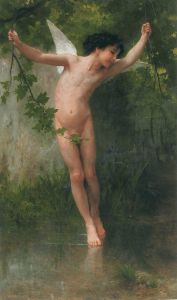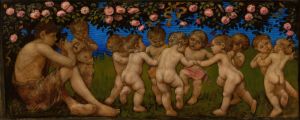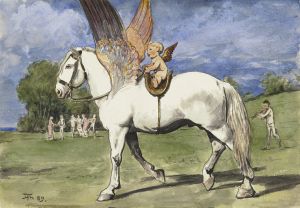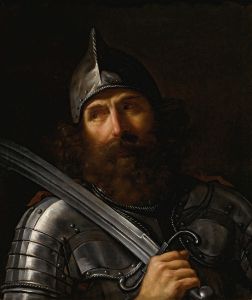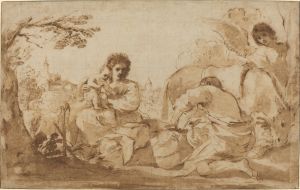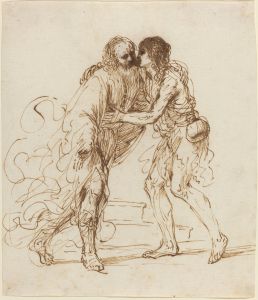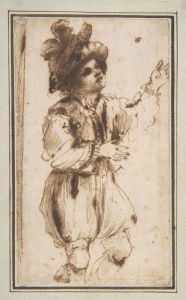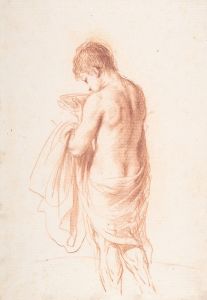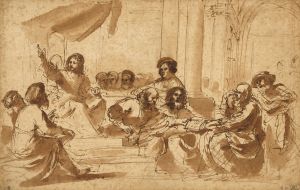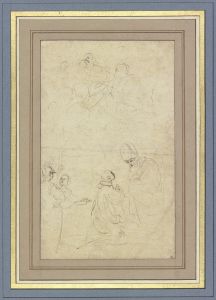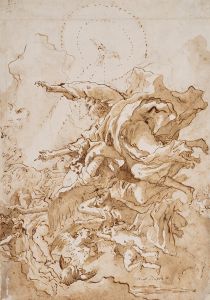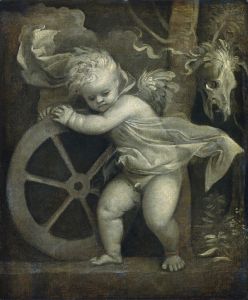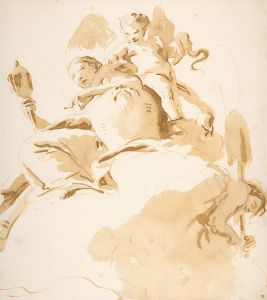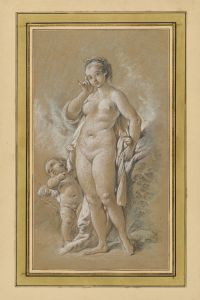
God The Father And Angel
A hand-painted replica of Guercino’s masterpiece God The Father And Angel, meticulously crafted by professional artists to capture the true essence of the original. Each piece is created with museum-quality canvas and rare mineral pigments, carefully painted by experienced artists with delicate brushstrokes and rich, layered colors to perfectly recreate the texture of the original artwork. Unlike machine-printed reproductions, this hand-painted version brings the painting to life, infused with the artist’s emotions and skill in every stroke. Whether for personal collection or home decoration, it instantly elevates the artistic atmosphere of any space.
"God the Father and Angel" is a painting by the Italian Baroque artist Giovanni Francesco Barbieri, better known as Guercino. Created in 1629, this work exemplifies Guercino's mastery of dramatic chiaroscuro and his ability to convey deep emotion through religious themes. Guercino, whose nickname means "the squinter" due to an eye defect, was a prominent figure in the Baroque period, known for his dynamic compositions and expressive use of light and shadow.
The painting depicts God the Father, a central figure in Christian theology, accompanied by an angel. God the Father is portrayed with a commanding presence, characterized by flowing robes and a benevolent yet authoritative expression. The angel, depicted with delicate features and ethereal wings, appears in a posture of reverence or communication, suggesting a divine interaction between the celestial beings.
Guercino's use of chiaroscuro is evident in this work, with stark contrasts between light and dark areas that create a sense of volume and depth. This technique not only highlights the figures but also imbues the scene with a spiritual intensity, drawing the viewer's eye to the divine interaction. The soft, diffused lighting on the angel contrasts with the more robust illumination of God the Father, emphasizing the hierarchy and the divine nature of the figures.
The painting is a testament to Guercino's skill in rendering human emotion and divine presence. His ability to capture the subtleties of expression and gesture allows the viewer to engage with the narrative on a personal level. The composition is balanced yet dynamic, with the figures positioned in a way that suggests movement and interaction, a hallmark of Baroque art.
Guercino's work was highly regarded during his lifetime, and he received numerous commissions from religious and secular patrons. "God the Father and Angel" reflects the artist's deep understanding of religious iconography and his ability to translate complex theological concepts into visual form. The painting is a fine example of Guercino's contribution to the Baroque movement, characterized by its emotional depth, dramatic use of light, and dynamic composition.
This painting is part of the collection at the Pinacoteca di Brera in Milan, Italy, where it continues to be studied and admired by art historians and enthusiasts alike. The Pinacoteca di Brera is one of Italy's most prestigious art galleries, housing an extensive collection of Italian Renaissance and Baroque art. Guercino's work, including "God the Father and Angel," plays a significant role in the gallery's representation of Baroque art, offering insight into the religious and artistic sensibilities of the 17th century.
In summary, "God the Father and Angel" by Guercino is a quintessential Baroque painting that showcases the artist's technical prowess and his ability to convey profound religious themes. Through his expert use of chiaroscuro and composition, Guercino creates a powerful visual narrative that continues to resonate with audiences today.





